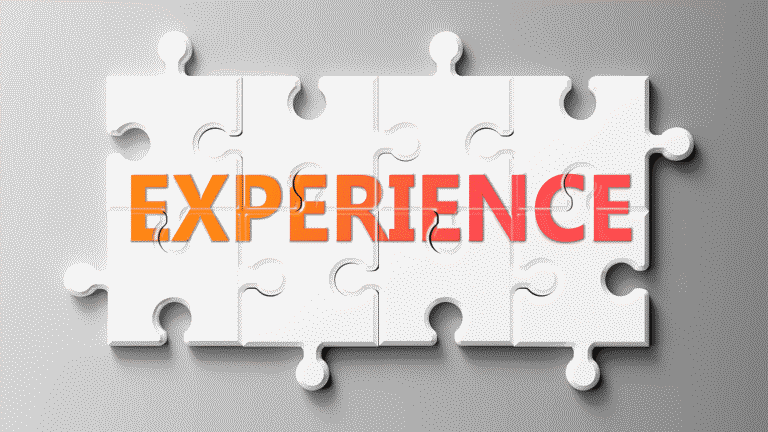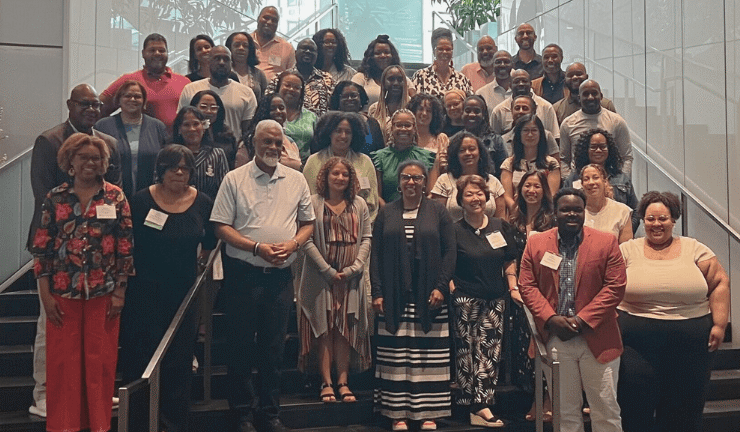Hiring at the Cultural Crossroads

“Hiring at the Cultural Crossroads” was originally published in the January/February 2022 issue of Net Assets magazine, the membership magazine of the National Business Officers Association.
The Bottom Line
- To identify weak points in your hiring process, consider the data you collect on teacher recruitment, and where candidates tend to drop out.
- New employees can provide valuable feedback on what is working well and what isn’t in the hiring process.
- To attract diverse candidates, make your school’s stance on equity and belonging clear on your website and welcome materials.
I can vividly remember the fall of 2019, driving to school and noticing very little around me except the traffic lights. Green. Yellow. Red. Green. Yellow. Red. It all seemed so predictable. Little did I — or anyone — know how everything was about to change. A global pandemic would intersect with social and racial unrest that captured not only the headlines, but hearts of the entire country, while political discord rose to new levels.
So much has changed. New comfort with online learning, protocols like mask-wearing, and socially distanced instruction were all critical pivots to meet the needs of students in an unusual time. Yet through all this, one unfortunate aspect of our independent schools has remained in place: significant faults in our hiring processes.
That is not to say hiring processes haven’t changed for the better. Gone are the days of newspaper classified ads, jingle-based radio commercials, and packed career fairs in school gyms. Well before the pandemic these were largely supplanted with internet job boards, applicant tracking systems, and paperless application forms. And now, two years into the COVID-19 pandemic, interviewing and recruiting candidates has moved to online platforms in many cases, and schools are making use of virtual tours. We are doing better at “meeting people where they are,” at least in terms of their physical locations.
Yet after two years, we can now reflect on the hundreds of personal meeting IDs, password-protected waiting rooms, and fun-for-a-while green-screened backgrounds and see that ironically, in our attempt to make our virtual hiring processes more human, we largely neglected to account for all-too-human behaviors and the ways in which our human faults show up in these spaces. That is because we have not addressed a core issue at the heart of the matter, whatever form hiring takes: implicit bias.
Implicit bias is the unconscious prejudice in favor of or against a person or group, compared with another person or group, usually in a way to be considered unfair.
Rapid judgment can be both one of our biggest strengths and biggest weaknesses when it comes to hiring. Being able to read through and decipher hundreds of resumes, sit through hours of interviews, and come to a decision on a candidate is essential to bringing new candidates into our school communities. Nevertheless, our new virtual hiring spaces have too often left candidates of underrepresented backgrounds feeling devalued and unseen — that is, not seen for who they feel themselves to be. We have moved from trying to fit people into proverbial “boxes” to virtual boxes on our laptop computers.
At the top of a new calendar year, we sit at the traffic light as it gets ready to change from red to green, ahead of another hiring and recruitment season. This time, I wonder if independent schools will continue to adjust and reinvent processes to meet outstanding needs. I hope we will not simply roll down the road, but take a moment to ask ourselves: What we have learned over the past two years? We would do well to think about “red lights” — what we need to stop doing; “yellow lights” — what we need to pause and consider; and “green lights” — where we need to put our foot on the gas and go.
As you approach this intersection, a few rules of the road may help you approach implicit bias in the virtual hiring process.
Red Light
Don’t assume all interviews and interviewees should be the same.
My wife loves her bright blue hatchback sedan with dog paw print decals on the back. I drive a pickup truck with my favorite sports team magnets that I wouldn’t trade in for the world. Both vehicles run on gas. Both get us where we need to get to be. Both have a small collection of coffee mugs that she has left on her way to work (sometimes I give her a ride). However, they are very different vehicles, with two very different average gas mileages. But in their differences, they meet my wife’s needs and mine.
One of the biggest ways that implicit bias shows up in our hiring processes is when we make equality our goal, not equity. That is, when we want to make all candidates’ experiences exactly alike rather than meeting individual needs. Yes, we want candidates to have a similar recruitment experience. Yes, we want candidates to be treated with the same care and respect. And yes, we want everyone to be viewed and evaluated in the same way. However, each candidate is different, and their experiences in the hiring process will be different too.
When interviewing a candidate, take into account their whole person and whole story before you make judgements that can elevate or devalue a candidate. Create a thoughtful and equitable scoring rubric for each stage of an interview process that evaluates candidates on skills or qualities. Steer clear of including rubric metrics on past experience, previous employers, or education, but rather focus on what a candidate can do for your school. Tie your interview questions to your rubrics and do not rank candidates based on scores. Instead, use this data to measure and assess what you are looking for in a candidate and to avoid making assumptions about potential “fit” and value add.
Tune out the noise.
Growing up in a household of four boys, there were few items that belonged to just me as a child. The car radio on long trips was one of the many things we shared. I wanted one song, while one brother wanted another. My mom wanted gospel music, while my dad preferred listening to the baseball game. We would argue for miles about what should be playing, until finally my dad would say: “Enough. If we can’t agree, we’ll just all sit in silence.” Those turned out to be some of the best parts of our family adventures, when we stopped focusing on the sounds piped in from outside our car and we started listening to and learning about each other.
When we meet someone on a screen, it is natural to be curious about what is in the background. What books are on their bookshelves? Who is in the pictures on their walls? What animal, small child, or other distraction comes into the screen? It is important to remember that when virtually interviewing a candidate that we have entered candidates’ personal spaces, their homes, and their lives. Strive to focus on what matters: the human in front of you, not the noise around them. Rather than making assumptions about a person’s story and judging their surroundings, let them tell you their story. It will likely provide for more interesting conversation than any preconceived notions about who they are.
One tip for doing this is to take notes following questions instead of trying to remember or recall what a candidate might have said. Ask a candidate to clarify an answer by using phases such as, “I heard you say, …” and “Did I interpret that the right way?” This will lead you to reach for understanding instead of leading to judgment.
Yellow Light
Consider the data.
When you approach a green light that is beginning to change yellow, you probably ask yourself: Do I slow down or do I speed up? Are there cameras or is someone watching? Is risking a ticket worth it if I save a few extra minutes driving? All of these questions unfold in the blink of an eye, and in less than a second you make the decision that you believe is best. The same thing happens in our interview process.
We constantly take snap shots of our candidate pools, our funnels, our email blasts, and so on. We create dashboards to highlight which candidates come into our stages of interviewing at various points and their engagement level, and to track if we are creating a diverse pool with different identity markers. But what do we do with this data? Do we use it to guide our future searches, or do we stuff it away because we don’t like what it shows us? Data is some of the rare factual evidence we have to combat implicit bias. Schools using the trove of data in this new online hiring environment can move away from quick decisions and instead can make systemic changes that can help diversify and retain candidates long-term. Interrogate the gaps that might be uncovered in your process. Ask the hard questions. Here are some examples:
- Where are you (or are you not) placing our job descriptions?
- TIP: LinkedIn, college boards, and social media are places more likely to be visited by candidates without previous independent school experience.
- What values or opportunities do future employees see when they get to your website? Is your mission statement or diversity statement on your employment page?
- Who do candidates meet or interact with while they are on campus for an interview?
- TIP: Consider students, staff, and community members in addition to faculty.
- Who in your community can you leverage to recruit candidates and provide a fuller picture of the school?
- TIP: Examples include parents, board members, and alumni.
- Why are candidates of particular backgrounds or identities not applying?
Bring in an expert with fresh eyes to consider your work. Create complete hiring system evaluation tools that can measure these questions to uncover gaps in each step of the process and center your protocols around the user experience. Use data points as pieces of a potential story and evaluative questions as guiding posts to change the way you recruit and retain candidates of diverse backgrounds.
Listen to your new employees.
Like many millennials, before buying a product, I become fixated on how many stars and how many likes that product has received — even cars. I’ll even filter based on 4-star ratings to narrow down to find the best judged products.
While there are no publicly available star-driven rating systems for our hiring systems, candidates are rating the experience all the same privately. Ask a candidate who has gone through your school’s process, from recruitment email to onboarding, what they thought. What gaps existed? What processes could have been cleaned up? What biases or experiences did they encounter that they don’t want future colleagues to go through too? Be willing to be vulnerable, just like you asked them to be. You want all candidates to walk away from your hiring process feeling positive, including candidates who don’t land the job or turn down an offer, because they may share their experience with other potential hires.
The better you treat a candidate in the hiring process, the more likely they are to provide feedback at the end of your process. You can use a survey to collect information about ask why a candidate choose another school or job. Ask questions about the factors in their decision or what could have gone better in the hiring process? Any feedback — big or small, good or bad— can help you with future candidates and shows that you care enough to ask. And who knows — this person might apply again in the future!
Green Light
Change the way you talk before you change the way you act.
One of my favorite parts of buying a car is when the salesperson tells you all the bells and whistles that came with your sweet new ride. The pretty buttons. The pamphlets. The powertrain warranty. And all that leads to the paperwork. You sign away your next 72 months’ paychecks and have very little or no idea what the words all mean. Business officers may be an exception, but most of us aren’t dealing with contracts for a living and don’t understand the language or the lingo in front of us. The same can be said for many of the people on your hiring teams when it comes to implicit bias.
Do your hiring teams know what implicit bias is? Do they know what questions they can and, more importantly, cannot ask legally during an interview? Do they know the positive impact and the harmful damage they can have on candidates through the process?
Before you address ways to mitigate implicit bias in your hiring process, your school must have or create a culture that understands what it is. This can be addressed through training, and more importantly by your school taking a stance on equity and belonging. Rather than making people read the fine print, make this statement in bold. Put it on your website and on your job application forms. If you have a diversity, equity, and/or inclusion statement, make sure it is in the materials you send to candidates. Make sure you ask questions regarding diversity, equity, and/or inclusion in your interviews. Explain goals or plans your school has in this area and the ways you are aiming to improve. Let candidates know that the work of providing an equitable interview process and work environment is important to you, and then prove it.
On-Demand Interviewing and Hiring Course
NBOA offers on-demand courses on interviewing and hiring, as well as employee leave and accommodations, and performance management and separations. These are intended to educate hiring managers and supervisors, such as department heads and deans, on key aspects of their management responsibilities. Learn more at nboa.org/learning/online-learning.
Train your staff on biases that might show up.
Despite all these car analogies, I’m not really a car person, but my father-in-law is. He can tell you the difference between a 1971 Mustang Mach 1 and 1978 Mustang II King Cobra. I would be lucky to tell you they are both Fords. He grew up on Martin Scorsese and I grew up on Vin Diesel, which is enough said. My eye for cars and his eye for cars are different. He knows what he’s looking for when he sees the right car because he was trained to notice variations and appreciate differences.
If we give our staff and hiring teams proper training on implicit bias, they will be better able to mitigate it. Do they know why implicit bias surfaces? Do they know how to address or talk about it when it happens? If they don’t, they could well make critical mistakes — writing off talented candidates or driving them away by showing them that your school is not serious about the work of diversity, equity, and inclusion. Spend the time and the resources to make sure your hiring teams and members of your committees understand the importance of this work and help them grow along the way. Invest in workshops, double down on marketing, and engaging with candidates through personalized recruitment tools, and, if possible, connect with other local schools to determine what may be local trends and what may be particular to your school.
Start replacing “fit” with “add.”
I learned how to drive a car the way everyone should, with a manual transmission. I can remember silently swearing at my parents for making me learn on what I thought was a useless and dying art. I hated hitting the clutch, shifting gears, and trying to focus on the road all the same time. Why couldn’t I learn on an automatic? Why couldn’t it be easier?
Hiring and finding the best people to work at our institutions is similar to driving a manual transmission. If we want to diversify and amplify our candidate pools, we need to diversify and amplify our efforts and not take the “easy” way out by proceeding the same way we always have. We need to shift gears.
We need to look for people and candidates that will not only “fit” what we are looking for in our job postings, but beyond that, people who will add value to our schools and the lives of our children. We need to become intentional about the ways we disrupt bias in our job descriptions, our virtual interview protocols, and on our onboarding of new colleagues. We can’t do old and expect new.
Virtual hiring and technology in our hiring processes are developments that are here to stay. As we approach this next intersection and pause at the traffic light, questions about our hiring processes will no longer be as simple as, “How do we start?” and “Where do we go?” Instead, we’ll be asking, “How fast can we go?,” “What might be the best route?,” and “Who are we bringing along for the ride?” Just as there is more than one way to get to a destination, there is no perfect process for eliminating bias in your process. By taking the necessary steps and following a good map, we can lean into change and move our schools forward.
Brandon Jacobs is Practice Leader of Carney, Sandoe & Associates’ Diversity, Equity, Inclusion & Belonging Consulting Practice. He also supports the Head of School and Key Administrator Search Practices. Prior to CS&A, he served as the Director of Diversity, Equity, and Inclusion at The Shipley School in Pennsylvania. He was also served in administrative and leadership roles at the Hill School, Global Online Academy, and Rider University.








